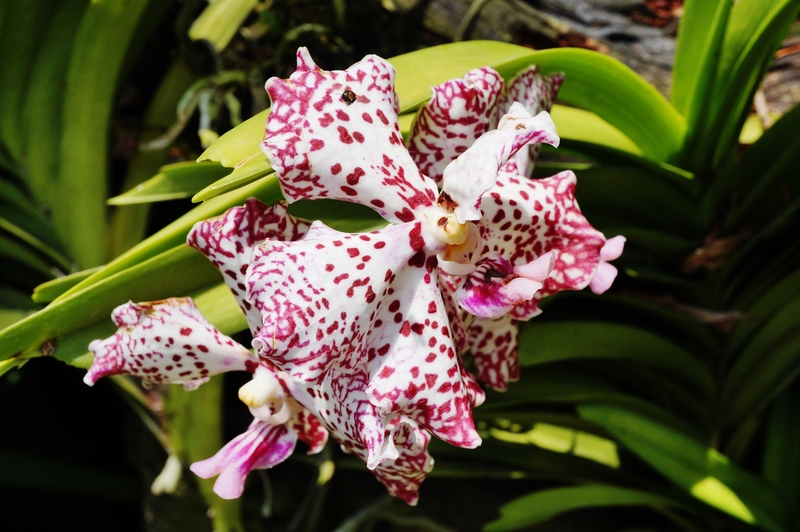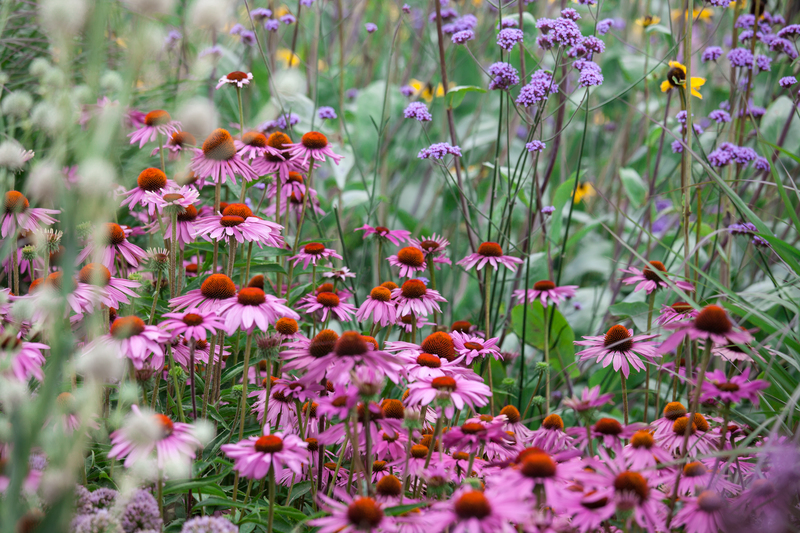Achieve a Beautiful Garden: 3 Essential Weed Control Tips
Posted on 28/05/2025
Achieve a Beautiful Garden: 3 Essential Weed Control Tips
A lush, vibrant, and weed-free garden is the dream of every avid gardener. However, weeds can quickly transform your beautiful landscape into a tangled mess if not managed properly. By learning the most effective weed prevention techniques, you'll not only enhance the aesthetics of your space but also protect your precious plants from nutrient competition and disease.
In this comprehensive guide, we'll discuss three essential weed control tips you can use to achieve a beautiful garden. These simple yet powerful strategies will help you grow flourishing flower beds, thriving vegetable patches, and pristine lawns--all while minimizing the back-breaking chore of weed removal.

Why is Weed Control Crucial for Garden Success?
Weed management forms a foundational aspect of every successful gardening endeavor. Left unchecked, weeds compete with your ornamental or edible plants for light, water, nutrients, and growing space. Some weeds even harbor pests or diseases that can spread to your crops and flowers.
- Improves plant health: Less competition means your chosen plants get the resources they need.
- Enhances garden beauty: A weed-free landscape offers a polished, picture-perfect appearance.
- Lowers garden maintenance: Proactive control saves you from time-consuming weeding later.
- Protects investment: You'll get higher value and satisfaction from your gardening efforts.
Understanding the benefits of successful weed control will motivate you to apply the tools and tactics outlined in the sections below.
1. Mulching: Nature's Best Weed Barrier
If there's a single, most effective way to control weeds, it's the use of mulch. Mulching is the gardener's secret weapon for suppressing weed growth while enriching soil structure and maintaining moisture.
How Mulch Works for Weed Suppression
Applying mulch--whether organic or inorganic--creates a protective layer over the soil. This weed barrier blocks sunlight, making it difficult for weed seeds to germinate and grow. At the same time, mulch helps retain water and moderate soil temperature.
Types of Mulch for Weed Control
- Organic mulches: Includes bark chips, straw, shredded leaves, compost, and grass clippings. These break down over time, feeding the soil and improving its fertility.
- Inorganic mulches: Such as landscape fabric, black plastic, gravel, or stone. These last longer and are effective for permanent beds or paths, but don't enhance soil health.
Best Practices for Using Mulch in Your Garden
- Apply 2-4 inches of mulch around plants and between rows, making sure not to pile it against stems.
- Refresh yearly: Organic mulch decomposes, so top it up annually to maintain a solid weed-stopping cover.
- Combine with landscape fabric for extensive areas or challenging weed problems.
- Remove existing weeds before spreading mulch for best results.
Quick Tip: Avoid using lawn clippings from pesticide-treated grass, and don't pile mulch thickly against tree trunks or woody plant bases.
2. Hand Weeding & Timely Removal: Staying Ahead of Invasion
Even with the best proactive measures, some weeds will manage to pop up. That's why regular hand weeding and early intervention remain key components of an effective weed management strategy.
Why Early Weed Removal is Essential
- Prevents seed spread: Most weeds reproduce rapidly; if you catch them before they go to seed, you halt future generations.
- Saves effort: Pulling young weeds is much easier than battling established, deep-rooted invaders.
- Reduces competition: Early removal keeps smaller weeds from robbing your garden of nutrients and water.
Effective Hand Weeding Techniques
- Use the right tools: A hand fork, trowel, or dandelion digger makes uprooting weeds quick and efficient.
- Weed when soil is moist: Damp soil makes it easier to pull weeds out by the roots rather than snapping them at the base.
- Dispose of uprooted weeds: Don't leave them on the soil where they could regrow or drop seeds.
- Stay consistent: Make weeding a weekly habit, especially during rapid growth seasons (spring and early summer).
How to Spot Problematic Weeds Early
Stay vigilant! Learn to identify common garden weeds in your region such as dandelion, chickweed, crabgrass, and bindweed. Remove unusual or fast-growing plants as soon as you notice them. The earlier you act, the less likely weeds will establish strongholds in your beds and borders.
Pro tip: For large or perennial weeds with taproots, use a long-handled weeder or spade and aim to remove as much root as possible.
3. Smart Planting & Dense Plant Cover: Outcompete the Weeds
Nature hates a vacuum! Dense planting and careful crop selection can make your garden virtually weed-resistant. When your chosen plants cover as much ground as possible, there's less open space for weeds to take hold.
How Strategic Planting Fights Weeds
- Dense plantings shade the soil, reducing germination of weed seeds.
- Fast-growing groundcovers and sprawling perennials create a natural weed barrier.
- Interplanting crops (mixing different species) fills gaps and provides competition against weeds.
Best Plant Choices for Weed Suppression
- Low-growing groundcovers: Vinca, creeping thyme, ajuga, and sweet woodruff quickly form weed-blocking mats.
- Sprawling vegetables: Squash, pumpkins, and sweet potatoes shade out weeds between rows.
- Ornamental grasses and perennials: Daylilies, hostas, and sedum are excellent for filling space in ornamental beds.
- Cover crops in vegetable gardens: Sow buckwheat, clover, or rye during off-seasons to crowd out weeds and improve soil.
Tips for Planting to Minimize Weeds
- Space plants closely (according to their mature size) to ensure quick canopy closure.
- Stagger sowing dates for crops to always have root competition throughout the season.
- Fill bare spots quickly: When a plant is removed, replace it or mulch the space immediately.
- Rotate plant families: Changing plant locations each year disrupts weed life cycles.
Want to achieve a beautiful, weed-free garden? Smart planting is your ally!
Bonus Tips for Long-Term Weed Control
- Edge your beds: Use deep spade-cuts or physical barriers to prevent grass and creeping weeds from invading flower or vegetable beds.
- Use a pre-emergent weed barrier: Landscape fabric or biodegradable paper prevents weed seed germination for new beds and paths.
- Mow lawns high: Taller grass shades the soil, reducing lawn weed problems.
- Avoid tilling deeply: Tilling can bring dormant weed seeds to the surface; use minimal disturbance methods for soil preparation.

Frequently Asked Questions About Weed Control in the Garden
How often should I weed my garden?
For best results, inspect your garden beds and borders at least once a week. Act quickly to pull any emerging weeds--smaller weeds are easier to remove and less likely to set seed.
Are chemical herbicides necessary for a weed-free garden?
Most home gardens do not require chemical weed killers. With mulching, hand weeding, and smart planting, you can keep unwanted plants at bay in a safe and organic way. Reserve herbicides for persistent perennial weeds if all else fails, and always follow label instructions.
Can I use newspaper or cardboard for weed control?
Absolutely! 4-8 layers of newspaper or a single layer of cardboard under mulch is a cheap, biodegradable weed barrier. Just ensure it's weighed down and well-watered to prevent it blowing away.
What should I do with pulled weeds?
If weeds have not gone to seed, you can compost them. If they have seed heads or persistent roots (like bindweed, nutgrass), dispose of them offsite or in yard waste bins to prevent re-infestation.
How do I tackle weeds in gravel paths or patios?
Occasional hand pulling, use of landscape fabric beneath new gravel, or spot application of eco-friendly weed killers (like vinegar solutions) can help keep hardscape areas clean.
Conclusion: The Secret to a Beautiful, Weed-Free Garden
Achieving a beautiful garden without weeds is possible when you combine mulching, regular hand weeding, and dense planting strategies. Stay consistent with these three essential weed control tips and you'll enjoy vibrant, healthy plants, fewer pests, and less back-breaking labor each season. Remember, a proactive approach saves time and effort--helping your gardening dreams blossom!
- Mulch regularly to block sunlight and build soil health.
- Stay vigilant about weeding--early and often--to stop weeds in their tracks.
- Plan your planting for dense coverage, shading out future weed invaders.
Start implementing these proven weed control techniques in your own garden today, and reap season after season of beauty, bounty, and satisfaction. Your plants--and your back--will thank you!
```
